Welcome to our Agra travel guide—a great starting point for anyone eager to explore one of India’s most iconic cities. Our goal is to to uncover the best things to do in Agra. We offer tips on navigating the city, experiencing local culture, and making the most of every moment. We’ll also cover practical insights: how to reach Agra, the most famous sites to see, what kind of food awaits, and how to fit it all into a tight schedule. Agra is famous for the Taj Mahal, but there’s so much more to explore beyond its dazzling marble walls.
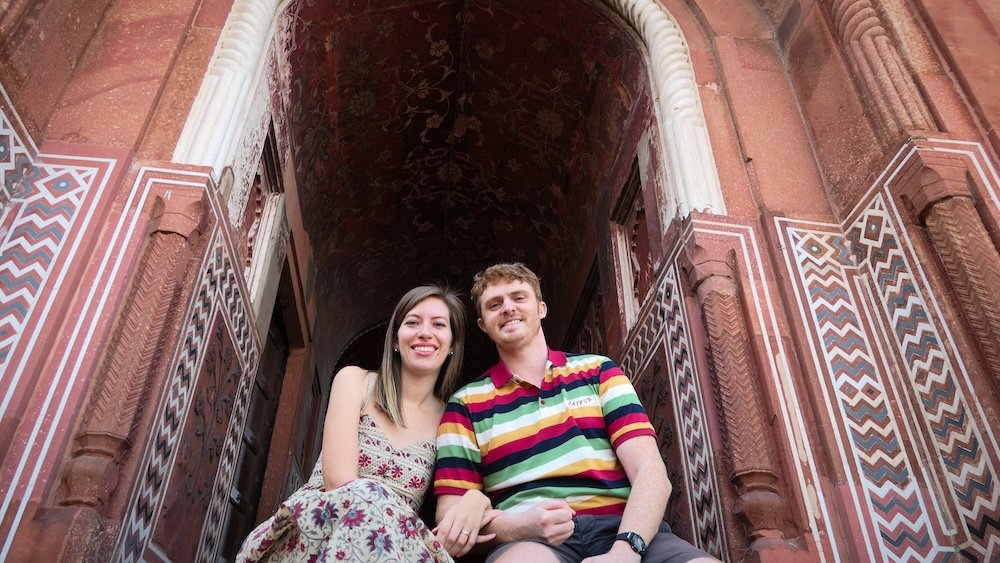
Agra can be overwhelming for first-timers. Crowded sites, long lines, and navigating local transportation are often cited as issues. People worry about being scammed or missing out on hidden gems beyond the Taj. Some also grapple with confusion over the best times to visit, cultural customs, and how to budget. As a result, travelers end up stressed instead of truly savoring the beauty of Agra. This travel guide addresses those points directly, ensuring you feel confident and prepared instead of nervous and uncertain.
source: Our Travel Video From Agra, India – Nomadic Samuel + That Backpacker
Maybe you’re a first-time traveler with a bucket list goal of seeing the Taj up close. Or perhaps you’re a seasoned globetrotter returning to uncover lesser-known corners of the city. You might be a family on vacation, a couple seeking romance, or a solo traveler craving a mix of architecture, history, and local flavors. Regardless of your background, we’re here to help you experience Agra in a way that feels immersive and enjoyable.
With that, you’re fully primed to dive into the things to do in Agra. From the grand architecture to the best eats, we’ve got all the details you need. Let’s begin this Agra travel guide and chart out everything that makes this city an unforgettable destination.
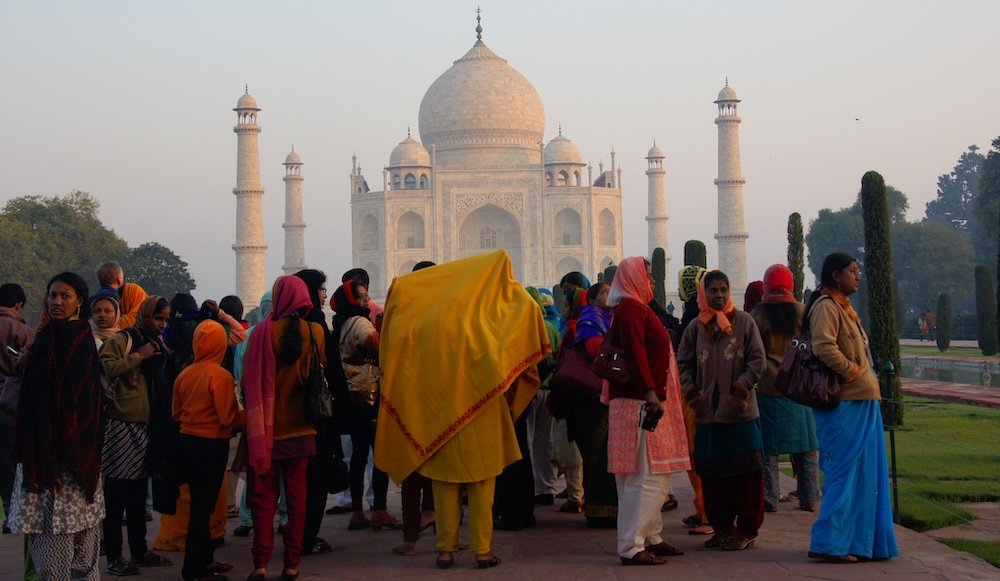
Agra Top Attractions and Best Places to Visit in Agra, Uttar Pradesh
If you’ve travelled to Agra, it’s for one primary reason – to see the Taj Mahal. One of the new seven wonders of the world, this magnificent structure is a mausoleum. Mughal emperor Shah Jahan commissioned its construction to give his late wife, Mumtaz Mahal, a glorious place to rest for eternity.
When Emperor Shah Jahan passed, he joined his love in this white marble masterpiece. In 1983, UNESCO named the Taj Mahal to its list of World Heritage Sites. As one of the best examples of Indo-Islamic architecture in India, its inclusion was never in doubt.
When planning your trip to Agra to see the Taj Mahal, keep some practicalities in mind. Two million people visit every year – take care to avoid weekends and holidays. Also, most visitors come between October to February, when temperatures are at their most comfortable. Highs from April-June soar above 40 degrees – if you visit then, go first thing in the morning.

The Taj Mahal isn’t the only thing to see in Agra – across from it lies the Agra Fort. More of a walled city, it served as home to the Mughal emperors when Agra was the capital. It is also a UNESCO World Heritage Site, as its three-kilometre walls, cultural significance, and commanding architecture make it a standout.
Its courtyards, red sandstone pillars, and intricate detail work will captivate you. Like the Taj Mahal, though, its scope is vast, so limit your exposure to midday heat by visiting it in the morning.
The Taj Mahal isn’t the only mausoleum in Agra. If you aren’t on a tight schedule, check out the Tomb of I’timad-ud-Daulah as well. Built alongside the Taj Mahal, rumours suggest it was a test draft for the Taj.
Built by one of the wives of Emperor Jahan for her late father, this place is far more peaceful. Its white marble surfaces, murals, and water works will make you glad you took the time to visit.
The main attractions of Agra centre around the Mughal royal family – however, you can also find Gurudwara Guru Ka Taal, a significant Sikh temple. Dedicated to Sri Guru Tegh Bahudar Ji, the ninth Guru of Sikhism, it is popular among pilgrims.
Built where the Mughal emperor arrested Guru Bahudar, Sikhs come here to honour his martyrdom. Filled with positive vibes, it is a pleasant place to visit. Come back at night, when the whole complex is lit up with many colours.
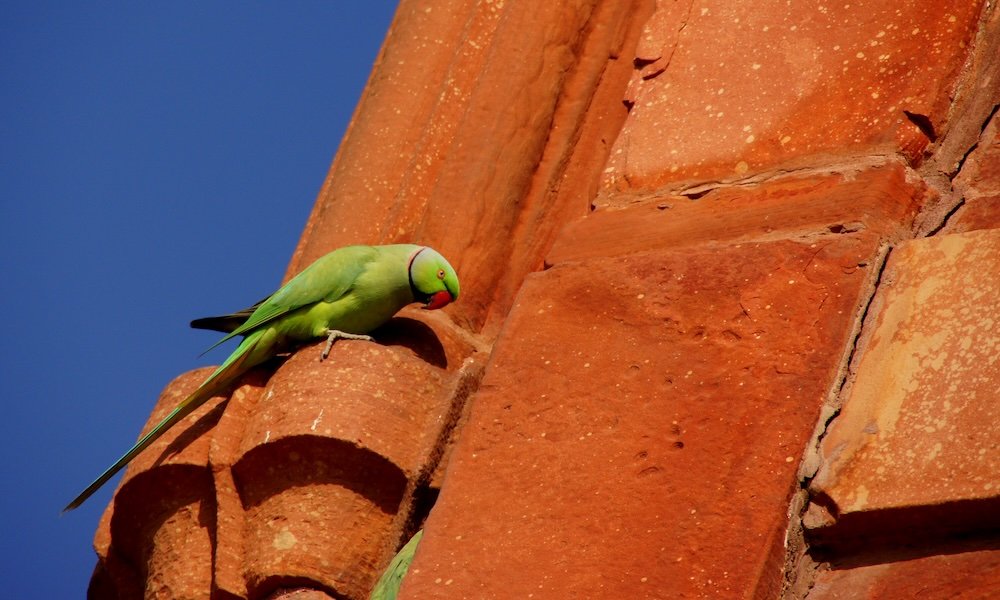
Other Cultural Attractions: Trip to Agra, India
Do you want to get an iconic shot of the Taj Mahal? Of course, you do – head over to the Mehtab Bagh to get it. A garden sitting across the Yamuna River, many photographers set up here to get that photo of the Taj.
Air pollution will affect the quality of the photo you get – as such, your mileage may vary. Wet season means better clarity, but the grounds also flood. Finally, enjoy the gardens before leaving – Mughal authorities designed this space to work in concert with the view of the Taj Mahal.
Take in the most prominent religious site in Agra by visiting the Jawab Masjid. Among the largest mosques in India, there is room for thousands of worshippers, who flood in for Friday prayers. Its Mughal-era architecture makes this space special – take lots of photos, but take care to also show respect.
Agra is home to a number of interesting religious sects. If this interests you, make time to check out the Dayal Bagh community during your time here. Founded on the principles of equality for all, they worked hard in the 1910s to make their land fertile.
From that point, they’ve managed to maintain a stable farming commune based on socialist principles. People take turns tending the fields, cleaning, and working night security. Their temple is worth seeing on its own, but take time to deep-dive into their fascinating daily lives.
As the world’s most populous nation, India is a place where wildlife is under severe stress. A non-profit known as Wildlife SOS began in Agra decades ago to help reverse the damage. They are most famous for their work in rescuing sloth bears from roadside circuses. However, they have also turned their attention to assisting elephants and leopards as well. These guys are the real deal, not a sham conservation project, so visit if you have the time.
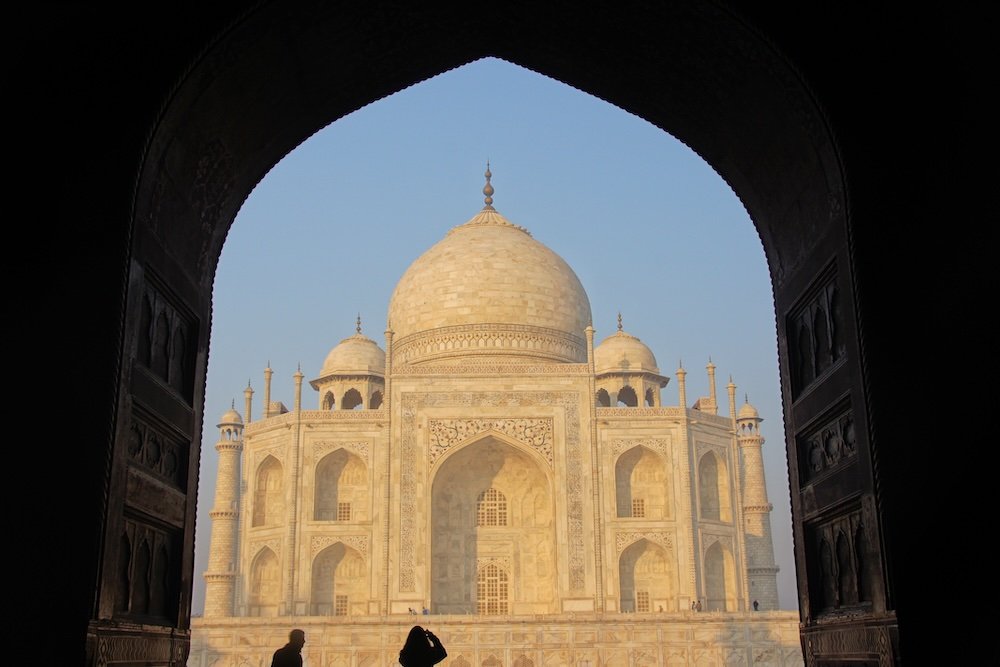
Top 20 Things To Do in Agra, India For Visitors
If you’re wondering about the best things to do in Agra we’ve compiled 20 must-see attractions and experiences. Whether it’s your first trip or your tenth, this curated list will add depth and excitement to your itinerary. Let’s dive into the best Agra has to offer!
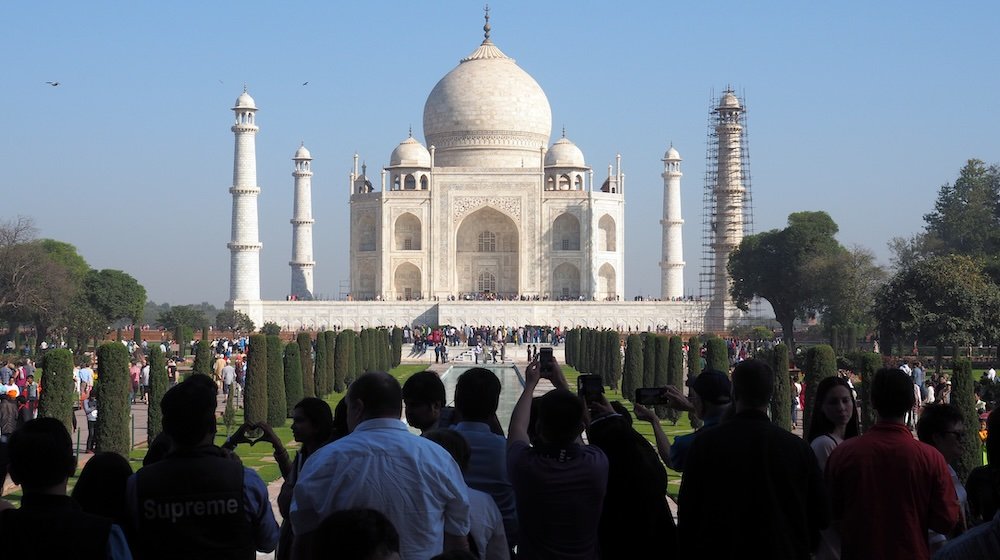
1) Taj Mahal (ताजमहल)
One of the world’s most famous monuments, the Taj Mahal is a shimmering marble mausoleum that stands as a symbol of love. The structure was commissioned by Emperor Shah Jahan for his wife Mumtaz Mahal. Every corner features intricate inlay work, precious stones, and stunning symmetry. Arrive at sunrise to witness the Taj’s white marble glow with the gentle rays of the morning sun. It’s a moment you won’t forget. The surrounding gardens add a peaceful vibe that enhances the grandeur of the monument.
- A must for any first-time visitor.
- Photography enthusiasts will love capturing different light angles throughout the day.
- Nearby souvenir markets are worth exploring, but be sure to bargain.
Tip: Book your tickets online to skip the main queue and save time.
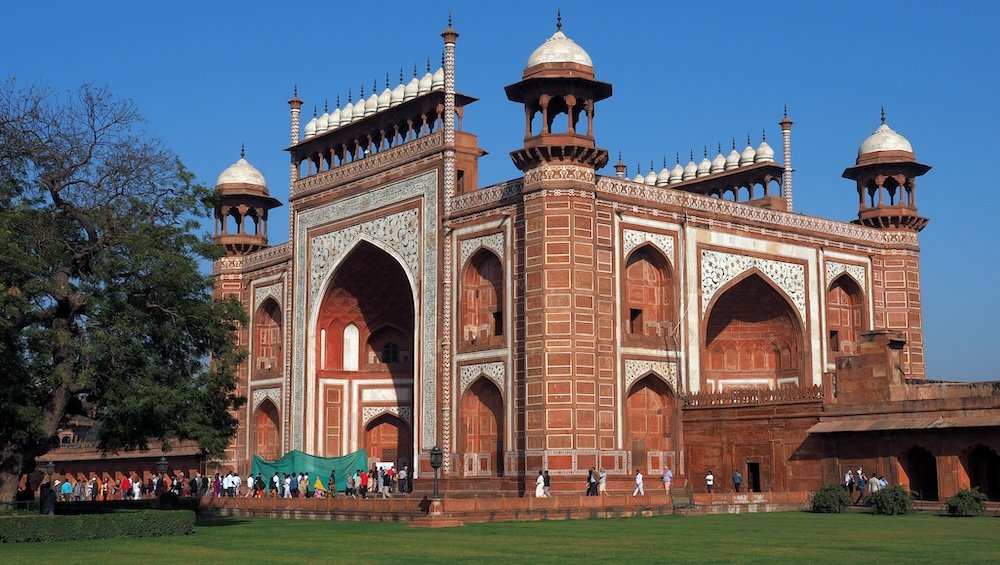
2) Agra Fort (आगरा का किला)
Agra Fort is a red sandstone fortress that was once the main residence of the Mughal emperors. It’s renowned for its massive gates, palaces, and courtyards that paint a vivid picture of Mughal-era grandeur. The view of the Taj Mahal from one of its balconies is a delight, especially during clear weather. Inside, you’ll discover rich architecture, intricate carvings, and marble halls. Try exploring early in the morning to beat the crowds and the midday heat. Make sure to hire a guide if you want deeper historical context.
- Features intricate blends of Islamic and Hindu architectural elements.
- Photography-friendly spot, but watch out for restricted areas.
- Popular among history buffs who want a deeper insight into Mughal heritage.
Tip: Carry water because the fort complex is expansive and you’ll be doing a lot of walking.

3) Taj Nature Walk
The Taj Nature Walk is a tranquil trail located near the east gate of the Taj Mahal. It offers a peaceful escape from the city’s bustling streets. This green belt allows you to experience local flora and fauna while staying close to Agra’s main attraction. Early morning visits are ideal to spot various bird species. You’ll also catch some unique angles of the Taj’s gleaming dome rising above the treetops. It’s a refreshing change of pace if you’ve spent your day hopping between historical sites.
- Perfect for travelers who enjoy walking in nature.
- Away from the usual tourist chaos, offering a quieter experience.
- Look out for signs to learn more about local plants and birds.
Tip: Bring binoculars if you’re into birdwatching—you might spot peacocks!
4) Baby Taj (Tomb of I’timād-ud-Daulah – اعتماد الدولہ کا مقبرہ)
Often called the Baby Taj, this tomb is considered a draft of the Taj Mahal’s design. Built by Nur Jahan for her father, it showcases delicate pietra dura (marble inlay) work. The structure stands on the banks of the Yamuna River, offering serene views and fewer crowds compared to the Taj. Many visitors find its intricate detail work even more impressive up close. It’s a smaller yet striking monument that shouldn’t be overlooked. Wander through the gardens at a leisurely pace for the best experience.
- Also referred to as the “jewel box.”
- Less crowded, making it ideal for photography enthusiasts.
- An excellent place to appreciate early Mughal architecture.
Tip: Visit in late afternoon for lovely lighting that highlights the inlay work.

5) Rooftop Views of the Taj Mahal
Agra is dotted with cafes and terraces that offer panoramic views of the Taj Mahal. Enjoy a cup of chai or a local dish while the monument towers majestically in the backdrop. The rooftops often have quirky decor and comfortable seating, making it a relaxing break in your day. Morning views give you the soft glow of sunrise, while evening visits treat you to romantic silhouettes. It’s a perfect way to take in the Taj without the hustle. Many travelers find these spots a highlight of their stay.
- Great for taking memorable photos.
- Some rooftops offer direct Taj views, so choose wisely.
- Menus usually feature local specialties alongside familiar favorites.
Tip: Check online reviews to find the best rooftop cafes before you head out.
6) Mehtab Bagh Moonlight Garden (मेहताब बाग़ – مہتاب باغ)
Mehtab Bagh is a garden complex across the Yamuna River that aligns perfectly with the Taj Mahal. Legend has it that Emperor Shah Jahan intended to build a black marble Taj here. Though that never happened, the garden remains a peaceful spot with unobstructed views of the Taj. Arrive close to sunset for golden-hour photos that look surreal. The manicured lawns and the reflective water add to the overall ambiance. It’s a quieter alternative to the bustling main complex.
- A favorite haunt for photographers capturing the Taj at dusk.
- Lesser-known than the main Taj complex, offering more tranquility.
- Easy to combine with visits to other nearby attractions.
Tip: Bring a small picnic and savor the Taj’s beauty from a peaceful vantage point.
7) Akbar’s Tomb at Sikandra
Located just outside the main city, Akbar’s Tomb is a testament to the architectural innovations of the Mughal era. Emperor Akbar himself started its construction, ensuring it reflected his eclectic style. The red sandstone structure features exquisite carvings and geometric patterns. Surrounding the tomb is a spacious garden where deer and peacocks roam freely. It’s a surprisingly serene escape from urban Agra. The blend of different architectural influences—Hindu, Islamic, and Christian—makes it a standout.
- Less visited by tourists, so crowd levels are manageable.
- The gardens offer an ideal spot for a calm stroll.
- A chance to see local wildlife up close.
Tip: Visit in the morning to see the wildlife at its most active.
8) Jama Masjid (Agra)
Agra’s Jama Masjid is one of the largest mosques in India, known for its impressive structure and cultural significance. Commissioned by Shah Jahan’s daughter, Jahanara Begum, it holds a treasured place in local life. The courtyard can hold thousands of worshippers during prayer times. The mosque’s simple yet elegant design contrasts with the more lavish Mughal monuments in the city. Wander around respectfully, taking in the intricate calligraphy and arches. It’s a humbling reminder of Agra’s enduring spiritual heritage.
- Modest attire is required for entry.
- Often overlooked by tourists, providing a more authentic experience.
- Entrance is usually free, but small donations are appreciated.
Tip: Check prayer times to avoid disturbing worshippers and to plan your visit more smoothly.
9) Mariam’s Tomb
Mariam’s Tomb is dedicated to Mariam-uz-Zamani, the wife of Emperor Akbar and mother of Emperor Jahangir. Situated near Sikandra, it’s easily accessible if you’re already exploring Akbar’s Tomb. This structure is smaller compared to other Mughal tombs, yet it’s uniquely designed with distinct architectural elements. Lush gardens and stone pathways make for a pleasant stroll. Fewer tourists visit, offering a quieter setting to appreciate its history. If you’re an architecture enthusiast, you’ll enjoy noting how Hindu and Mughal styles blend here.
- A hidden gem for those seeking offbeat spots.
- Well-maintained garden area ideal for peaceful walks.
- Provides insight into Mughal family lineage.
Tip: Combine this visit with Akbar’s Tomb and Jama Masjid to form a mini historical circuit.
10) Mankameshwar Temple
Close to the bustling markets, Mankameshwar Temple is one of Agra’s ancient temples dedicated to Lord Shiva. It’s said that if you pray here with a pure heart, your wishes (man kamna) get fulfilled. Expect a vibrant atmosphere, especially during major festivals. The temple’s architecture is modest, but the spiritual vibe is strong. Local devotees frequent the temple, adding an authentic cultural aspect to your visit. It’s an excellent break from the Mughal monuments and offers a glimpse into local Hindu traditions.
- Popular during Mahashivratri festival.
- Footwear must be removed at the entrance.
- Small stalls nearby sell religious souvenirs.
Tip: Visit in the early morning to witness local devotees performing daily rituals.
11) Kinari Bazaar
For a taste of local hustle and bustle, head to Kinari Bazaar. This lively market is filled with shops selling textiles, jewelry, spices, and handicrafts. Narrow lanes offer endless surprises, from street food stalls to colorful clothing. Bargaining is expected, so sharpen your negotiation skills. The energy here is contagious, giving you a true taste of everyday life in Agra. Strolling through the bazaar can easily fill an entire afternoon.
- Ideal for finding unique souvenirs.
- Street food is a highlight—try local snacks like samosas.
- Mind your belongings in crowded lanes.
Tip: Carry smaller notes to make bargaining smoother and to avoid change issues.
12) Dhobi Ghat
Dhobi Ghat is a traditional open-air laundry area where local families have washed and dried clothes for generations. It’s located near the Yamuna River and offers an interesting glimpse into a local way of life. You’ll see rows of washed clothes hanging out to dry, and the vibrant colors make for stunning photos. While not a typical tourist stop, it’s a unique cultural site. The dedication of the dhobis (washermen) is remarkable. If you’re a photographer, this is a goldmine of candid shots.
- A slice of everyday Agra not often seen by visitors.
- Best visited in the morning when washing is in full swing.
- Be respectful of people’s privacy.
Tip: Ask permission before taking close-up photos of the workers.
13) Taj Museum
Located inside the Taj Mahal complex, the Taj Museum offers deeper insights into the monument’s history. It houses original drawings and schematics detailing the Taj’s construction. Rare artifacts, including calligraphy samples and Mughal miniatures, are on display. Visiting the museum helps you appreciate the immense planning that went into the world-famous monument. It’s a small space but packs in a wealth of information. Plan to spend around an hour here.
- Entry might be included with your Taj Mahal ticket.
- Photography restrictions may apply; check signs.
- Great for history buffs eager for more context.
Tip: Visit the museum first to gain context before exploring the main monument.
14) Chini Ka Rauza
Chini Ka Rauza is the tomb of the Persian poet and Prime Minister of Shah Jahan, Allama Afzal Khan Mullah. It derives its name from the colorful glazed tiles (chini) adorning its walls. While partially in ruins, the monument still showcases intricate tile work and calligraphy. It’s a quieter site, perfect for those looking to escape tourist crowds. A stroll around the area reveals fragments of once-grand architecture. It’s a must if you love discovering lesser-known historical gems.
- Offers a different style from the typical red sandstone or white marble.
- Not heavily frequented, so enjoy the calm.
- A piece of Persian influence in the heart of Agra.
Tip: Wear comfortable shoes because the grounds can be uneven in places.
15) Taj Ganj Area
Located around the Taj Mahal, Taj Ganj is a historic neighborhood originally built to house workers who constructed the monument. Today, it’s a lively district with guesthouses, restaurants, and shops. You’ll find everything from street stalls selling kebabs to tiny stores hawking handmade crafts. The area bustles at all hours, reflecting a mix of tourists and locals going about daily life. Because of its proximity to the Taj, many choose to stay here for convenience. Exploring on foot is the best way to soak up the local vibe.
- Budget-friendly accommodations abound.
- Great for sampling local street food.
- Some rooftops offer direct Taj views.
Tip: Wake up early to see the streets come alive before the tourist rush.
16) Sheroes Hangout
Sheroes Hangout is a unique cafe run by acid attack survivors, offering both delicious food and a powerful social message. The space aims to empower these women and raise awareness about violence against women. Visitors can browse books, artwork, and handcrafted items while enjoying a casual bite. The cafe operates on a pay-as-you-wish model, emphasizing trust and community support. It’s more than just a dining spot; it’s a symbol of courage and resilience. Spending time here can be an eye-opening experience.
- Promotes social change and female empowerment.
- Menu features simple, tasty Indian snacks and beverages.
- Friendly staff eager to share their stories.
Tip: Donate or purchase souvenirs to support their cause and help them thrive.
17) Metabolic Sculptures at Yamuna Riverfront
Along the Yamuna Riverfront, you’ll occasionally spot modern art installations and metabolic sculptures. These are part of newer cultural initiatives in Agra to bring public spaces to life. The sculptures blend contemporary art with historical scenery, offering an intriguing contrast. Walking by the river, you’ll witness local life: people fishing, doing laundry, or simply strolling. The combination of art and day-to-day activity can be inspiring. It’s a quick stop but adds an unexpected twist to your travel experience.
- Perfect for those who love contemporary art in historical settings.
- Varying exhibits mean each visit might offer something new.
- Less crowded, offering peace and a chance for reflection.
Tip: Check local event listings to see if any art festivals or performances are happening when you visit.
18) Mughal Heritage Walk
For a more immersive cultural experience, consider the Mughal Heritage Walk in the Kachhpura Village area. This guided tour takes you through rural settings along the Yamuna River. You’ll meet local artisans, witness traditional crafts, and learn about community-based tourism initiatives. The walk often ends with a stunning view of the Taj Mahal from less-crowded vantage points. It’s an opportunity to see how the city’s heritage extends beyond grand monuments. You’ll leave with a deeper appreciation of local culture and daily life.
- Supports community development through responsible tourism.
- Great for culturally curious travelers.
- Offers unique photographic opportunities.
Tip: Book through reputable organizations to ensure your contribution goes back to the local community.
19) Kalakriti Cultural & Convention Center
The Kalakriti Cultural & Convention Center hosts live shows and cultural performances celebrating India’s artistic heritage. One popular show, “Mohabbat The Taj,” re-enacts the love story behind the Taj Mahal through dance and music. The center also showcases local arts and crafts for those interested in souvenirs. If you enjoy cultural performances, this is a great evening activity. The show is well-produced, offering a grand spectacle of costumes and storytelling. It’s an engaging way to end a day of sightseeing.
- Performances typically last around 90 minutes.
- Seating options vary in price, but even basic seats offer a good view.
- The venue has a gift shop featuring hand-crafted items.
Tip: Pre-book tickets during peak season to secure the best seats.
20) Wildlife SOS Agra Bear Rescue Facility
Located near the city, Wildlife SOS runs a rescue and rehabilitation center for sloth bears and elephants. The organization focuses on conservation, rescue from abusive environments, and education about wildlife protection. Visitors can take guided tours to learn about each animal’s journey to recovery. Observing the rescued bears in a safe, caring environment is both heartwarming and educational. Volunteering or donating helps support their mission. It’s a moving way to round out your trip, showing the compassionate side of Agra.
- Advance booking recommended to avoid disappointment.
- You can also sponsor an animal if you’re feeling generous.
- Great for families who want an educational experience.
Tip: Respect the guidelines about not touching or feeding the animals, to ensure their well-being.
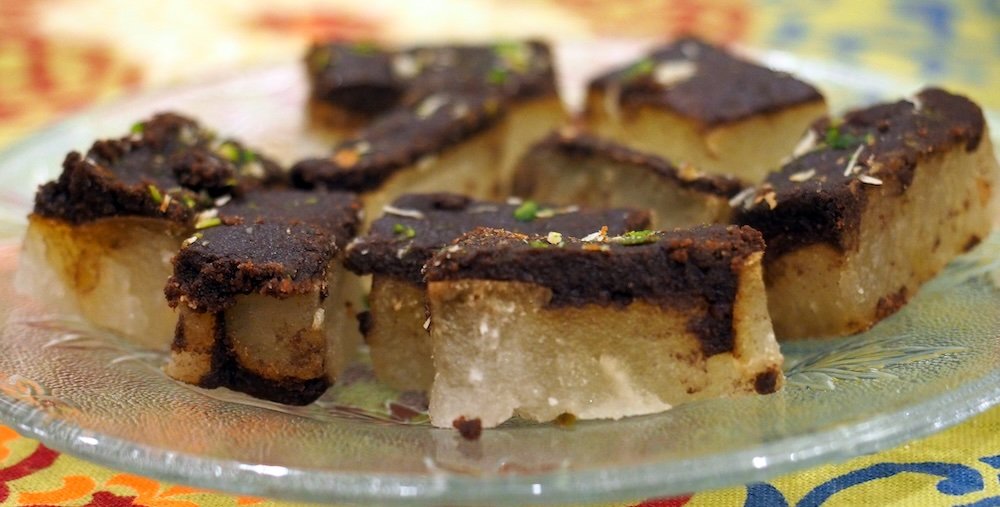
What To Eat and Drink in Agra, India
Agra isn’t just about the things to do—it’s also about what to eat. The city boasts a diverse culinary landscape that ranges from traditional North Indian fare to Mughlai delicacies. Below, we’ve outlined how you can savor local flavors in this Agra travel guide.
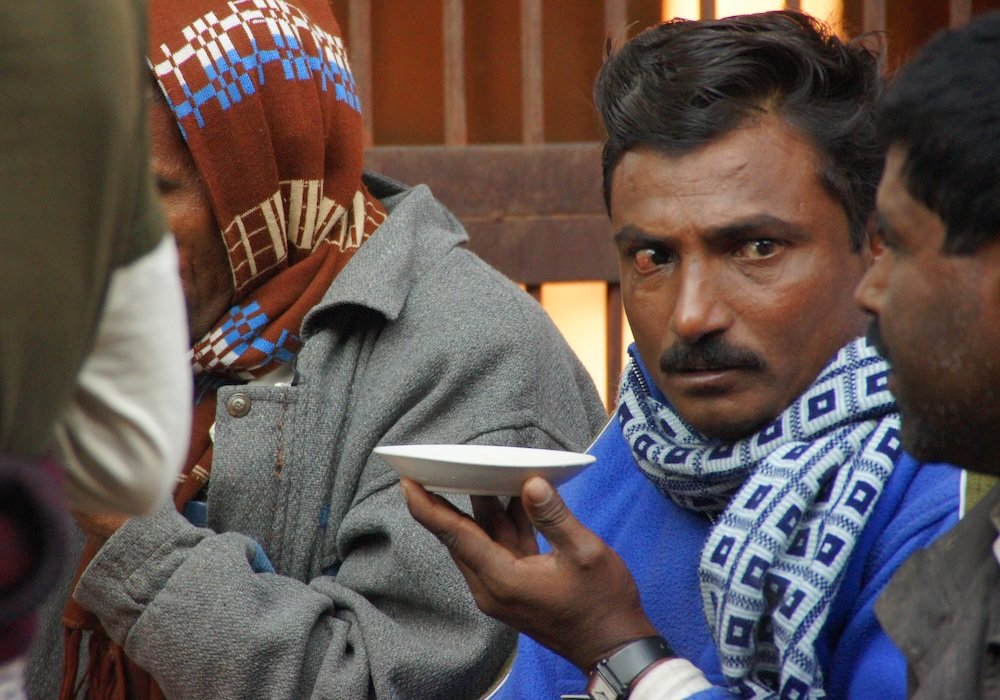
Street Food Delights
Petha is the city’s most famous sweet. Made from ash gourd (white pumpkin) soaked in sugary syrup, it comes in various flavors like Kesar (saffron) and Rose. Bedai and Jalebi is another iconic breakfast combo: a fried, puffy bread (bedai) served with spicy potato curry, followed by a sweet jalebi dessert. Street vendors also offer Dahi Bhalla, Gol Gappe, and Samosas. These snacks are bursting with flavor but do check the hygiene before indulging.
- Tip: Head to Chowk Bazaar or Sadar Bazaar for authentic street eats.
- Look for stalls with a high turnover of customers for fresher fare.
- Carry hand sanitizer and be cautious with street-side water.
Mughlai Cuisine
Agra, once a Mughal capital, preserves the legacy of grand kitchens. Mughlai dishes like Biryani, Kebabs, and Kormas remain popular. Rich gravies, fragrant rice, and succulent meats are a hallmark of this cuisine. If you’re vegetarian, Mughlai can still please your palate with dishes like Paneer Pasanda and Dal Makhani. Many local restaurants specialize in these recipes passed down through generations. The combination of aromatic spices and slow cooking yields unforgettable flavors.
- Tip: Try Jahanpanah or Pinch of Spice for a luxurious Mughlai experience.
- Ask for medium spice if you’re not used to fiery Indian curries.
- Pair with naan or rumali roti to soak up every bit of gravy.
Local Specialty Drinks
You can’t leave Agra without trying the lassi—a yogurt-based drink that’s thick, creamy, and often topped with malai (clotted cream). If you prefer something lighter, chaas (buttermilk) is a refreshing option. Masala chai is also ubiquitous; it’s sweet, milky, and spiced with cardamom or ginger. Cold beverages like Shikanji (lemonade with spices) are great for beating the heat. Many cafes near the Taj Mahal serve specialized teas for a calm afternoon break.
- Tip: Sample different flavors of lassi, from mango to rose.
- Look for stalls using fresh, quality ingredients to avoid an upset stomach.
- Sip slowly to appreciate the subtle spice blends.
Sweets and Desserts
Agra’s dessert scene doesn’t end with petha. Gajak is a popular sesame-based sweet available in winter months. Rabri (thickened sweet milk) is another beloved treat. Traditional dessert shops also offer gulab jamun, rasgulla, and a host of other Indian sweets. If you have a sweet tooth, you’ll find plenty of options to keep you happy.
- Tip: Deviram Sweets is famous for bedai and other desserts.
- Always request fresh sweets for the best taste.
- Don’t hesitate to ask for samples if available.
Fine Dining and International Options
While local fare is a must, Agra also has a growing selection of international and fusion restaurants. You’ll find Italian, Chinese, and Continental cuisine in upscale hotels and standalone eateries. Some offer panoramic views of the Taj Mahal, making the meal all the more special. If you’re craving familiarity, major fast-food chains have also set up shop. However, we recommend venturing out to sample the local flavors for an authentic experience.
- Tip: Pind Balluchi and ITC Mughal are reputable for quality.
- Reservations may be needed at high-end spots during peak tourist season.
- Don’t miss out on rooftop dining experiences.
Savor every moment. You’ll leave with a full belly and a richer appreciation for the city.
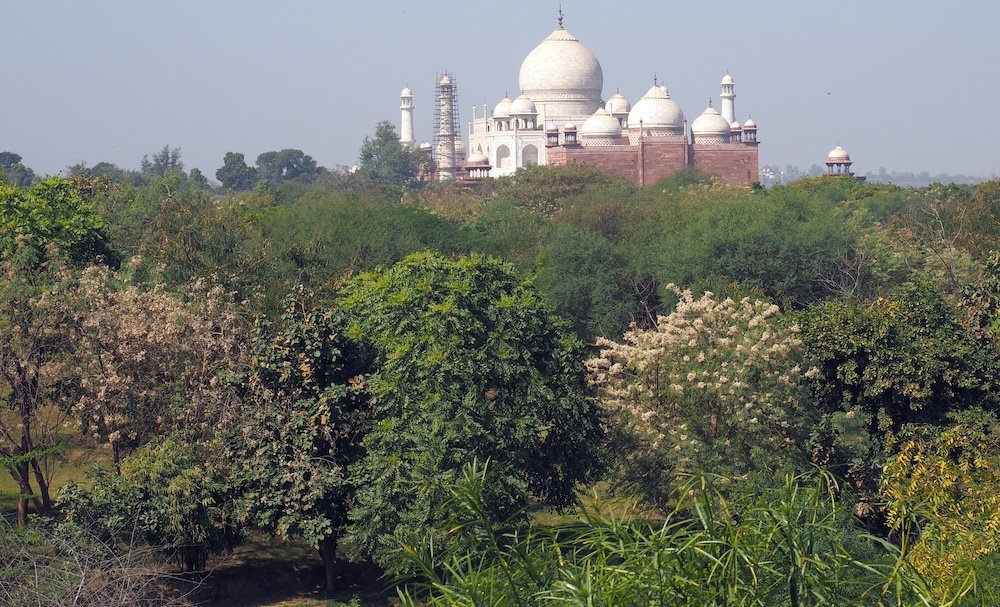
Tours For Visitors To Agra, India
Exploring Agra can be done independently, but organized tours offer convenience and expert insights. They often cover things to do efficiently while adding context to every site you see. Below are some recommended tour types as part of our Agra travel guide.
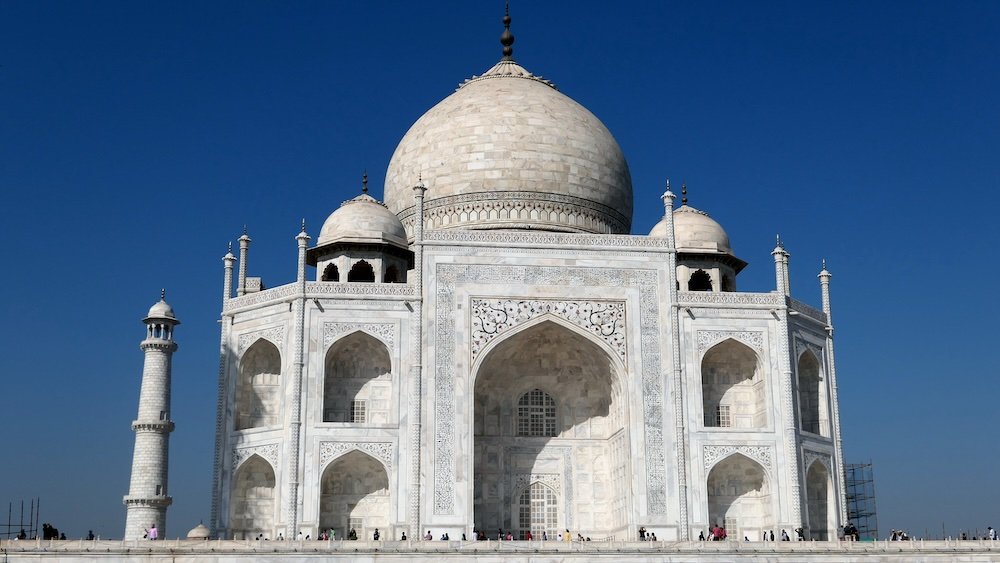
Guided Monument Tours
A guided monument tour takes you through the highlights—like the Taj Mahal and Agra Fort—with a licensed expert. Such tours typically begin at dawn to capture the Taj at its best. Guides share stories, historical facts, and architectural nuances that you’d otherwise miss. Many tours bundle entrance tickets for a hassle-free experience. Some also include breakfast at a local cafe. Look for small group tours if you prefer a more personal vibe.
- Tip: Book through reputable agencies to ensure knowledgeable, certified guides.
- Ask for early or late tours to avoid the hottest part of the day.
- Combine the Taj and Agra Fort in one day for maximum efficiency.
Local Food Tours
Food tours offer a deep dive into Agra’s culinary scene. Trained guides lead you through bustling markets and hidden eateries, explaining dishes and their cultural significance. From street snacks like pani puri to classic sweets like petha, these tours expand your palate. You’ll also learn about Mughlai cuisine and how centuries of royal influence shaped Agra’s flavors. Vegetarians need not worry—there are plenty of plant-based options. It’s an immersive way to experience local life.
- Tip: Check for tours that cater to dietary restrictions.
- Go hungry, as you’ll be sampling a lot of food.
- Comfortable shoes are a must for navigating busy markets.
Heritage Walks and Offbeat Tours
For a more authentic look into Agra’s daily rhythm, consider a heritage walk that leads you through local neighborhoods. You’ll see traditional homes, artisan workshops, and hidden shrines that most tourists overlook. Some tours delve into lesser-known monuments, like Chini Ka Rauza or the old city alleys near Jama Masjid. Offbeat tours help you connect with the city’s living culture rather than just its past glories. They often end with a cup of chai at a family-run home or a small local cafe.
- Tip: Wear modest attire, especially if you plan to enter religious sites.
- Bring a camera but be respectful when photographing residents.
- Prepare for narrow lanes and some uneven walking surfaces.
Bicycle and E-Rickshaw Tours
If you’re feeling adventurous, bicycle tours at sunrise provide a thrilling way to see Agra. Pedal through quieter streets, watch the city wake up, and see the Taj in the morning light. Alternatively, e-rickshaw tours are more relaxed, letting you hop on and off easily. Both types let you explore local markets, heritage sites, and riverside views in a short span. An experienced guide ensures you don’t miss the best spots.
- Tip: Confirm the route and difficulty level before booking a bicycle tour.
- Sunscreen and a hat can be lifesavers under the Indian sun.
- Stay hydrated—carry a reusable water bottle if possible.
Day Tours From Delhi
Some travelers opt for same-day tours from Delhi, which include round-trip transport by car or high-speed train. This can be efficient if you have limited time but still want to see the Taj Mahal and Agra Fort. You’ll have a driver, a guide, and a well-structured itinerary. Although it’s a bit rushed, it’s a popular option for those on tight schedules. Make sure to compare prices and inclusions, as costs vary greatly.
- Tip: The Gatimaan Express train is fast and comfortable.
- Plan for traffic if you choose a car.
- Double-check pick-up and drop-off points to avoid confusion.

Agra Accommodations Guide: Hotels, Guesthouses, and Hostels
Finding the right place to stay in Agra is crucial. From luxurious five-star hotels overlooking the Taj Mahal to budget-friendly guesthouses in the heart of the old city, Agra caters to all types of travelers. Below is a breakdown of options, so you can choose what suits your style and budget.
Luxury Hotels
If you crave opulence, luxury hotels near the Taj Mahal offer unrivaled views and top-notch amenities. Properties like The Oberoi Amarvilas or ITC Mughal pamper guests with infinity pools, spa treatments, and fine-dining experiences. Waking up to the sight of the Taj from your balcony can be magical. You’ll also enjoy concierge services that help you plan things to do in Agra with ease. While these resorts come at a premium price, the comfort and memorable views can be worth every penny.
- Tip: Request a “Taj-facing” room for the best panoramas.
- Check online deals or off-season rates for possible discounts.
- Enjoy the in-house restaurants, as they often specialize in Mughlai cuisine.
Mid-Range Hotels and Boutique Stays
For those seeking comfort without breaking the bank, mid-range hotels or boutique accommodations are excellent choices. These often include amenities like air-conditioned rooms, complimentary breakfast, and sometimes a small rooftop cafe. Many are conveniently located within a short distance of the Taj Mahal, making early-morning visits simpler. Boutique properties may feature unique decor, combining modern comforts with local craftsmanship. It’s a nice blend of affordability and atmosphere.
- Tip: Read recent reviews to ensure standards haven’t changed.
- Book directly on hotel websites for exclusive offers.
- Ask for rooms on higher floors for better views and less street noise.
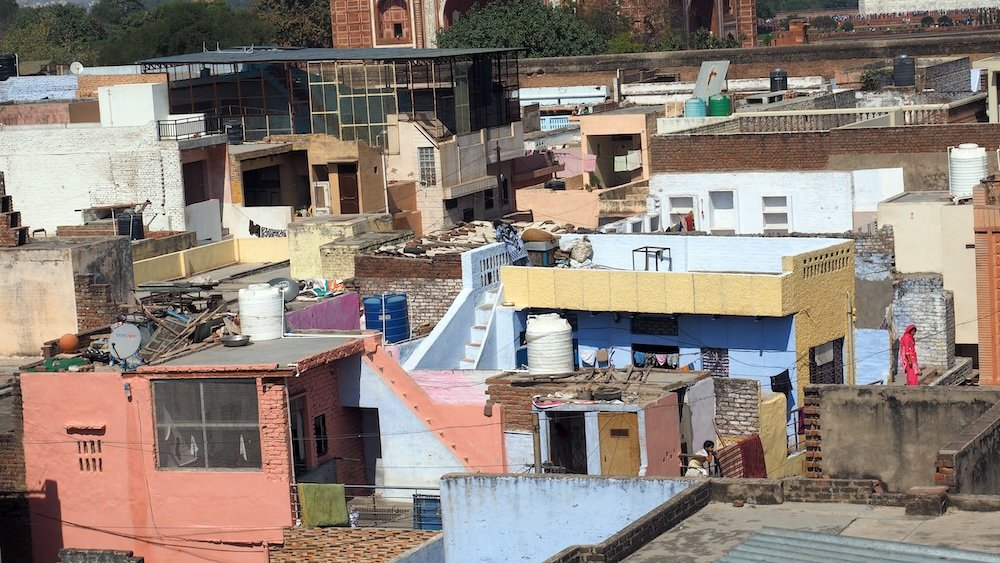
Budget Guesthouses
Guesthouses in the Taj Ganj area or near Agra Fort cater to travelers looking for a more local vibe. Rooms might be basic, but they’re usually clean and well-maintained. The real highlight is the chance to meet friendly hosts who can share insider tips on things to do nearby. Many guesthouses provide free Wi-Fi and communal areas where you can chat with fellow travelers. Don’t expect luxury, but do expect genuine hospitality.
- Tip: Inspect the room before committing if you book on arrival.
- Confirm whether hot water is available, especially in cooler months.
- Negotiating a slight discount is sometimes possible.
Hostels for Backpackers
If you’re a solo traveler or on a tight budget, hostels offer dorm-style accommodations where you can meet people from around the world. They often have communal lounges, shared kitchens, and even group activities. Some hostels are modern with quirky decor, while others are no-frills but have all essentials. Either way, it’s an affordable and social way to experience Agra. You’ll find many near the Taj Ganj area, providing easy access to the city’s main attractions.
- Tip: Check if they offer female-only dorms for added security.
- Ask about luggage storage options for late departures.
- Look out for rooftop areas that might offer partial Taj views.
Homestays
Homestays provide a glimpse into local life, often including home-cooked meals. You’ll stay with a local family, sharing spaces and stories while learning about their traditions. This option is excellent for cultural enthusiasts or anyone looking for genuine connections. Although facilities might be simpler compared to hotels, the personal touch can make your trip richer. You’ll gain insights into daily life in Agra that no guidebook can offer.
- Tip: Clarify meal preferences and timings if you’re on a tight schedule.
- Be respectful of household rules and local customs.
- Bring a small gift from your home country as a token of appreciation.
In Agra, the variety of accommodations ensures a match for every traveler. Choose what aligns with your budget and travel style. Then, all that’s left is to wake up each morning ready to explore all the things to do in this incredible destination.
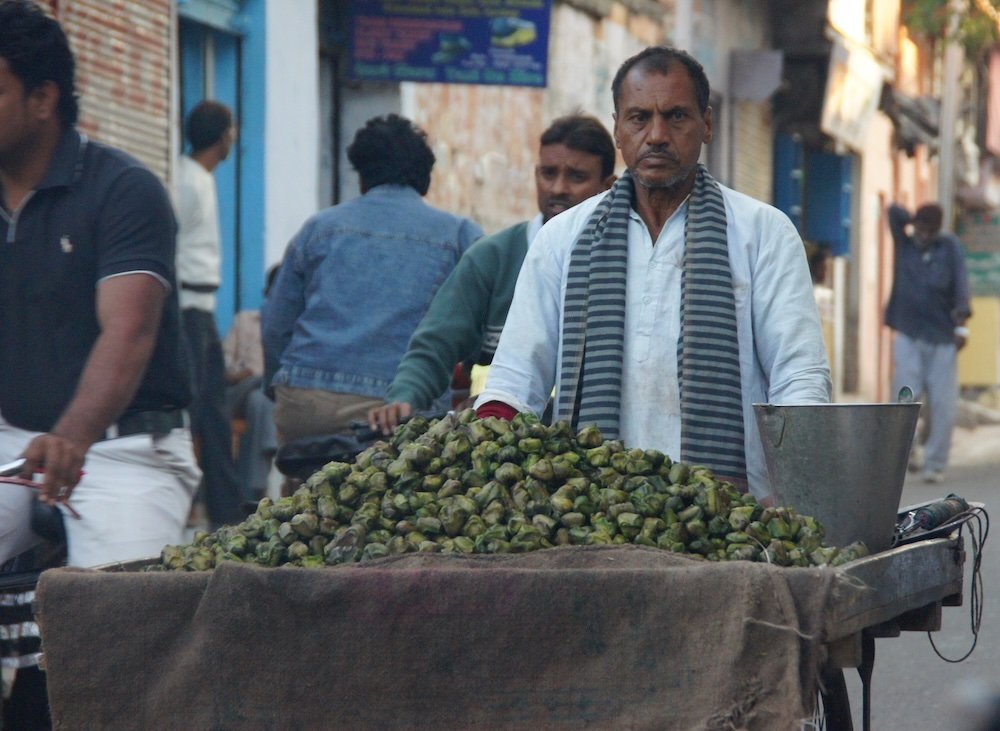
Day Trips From Agra, India
Once you’ve ticked off the major things to do in Agra, consider exploring the surrounding region. Several day trips from Agra offer rich experiences, including ancient cities, wildlife reserves, and cultural hubs. Here’s how to expand your trip to nearby destinations.
Fatehpur Sikri
A UNESCO World Heritage Site, Fatehpur Sikri was once the capital of the Mughal Empire under Emperor Akbar. Its red sandstone buildings include palaces, halls, and mosques, each boasting intricate carvings. The Buland Darwaza (Gate of Victory) greets visitors with its towering presence. Wander through the Diwan-i-Khas, Panch Mahal, and the Jama Masjid to appreciate Mughal architectural marvels. Despite being abandoned due to water scarcity, the site remains well-preserved. It’s only about an hour’s drive from Agra, making it an effortless day trip.
- Tip: Hire a government-approved guide for insights into the site’s history.
- Avoid midday visits if possible; the open courtyards can get very hot.
- Don’t miss the Tomb of Salim Chishti for its remarkable marble lattice.
Mathura and Vrindavan
Mathura is revered as the birthplace of Lord Krishna, while Vrindavan is where he is believed to have spent his childhood. These two cities are just an hour or two from Agra and offer a spiritual escape. Shri Krishna Janmabhoomi in Mathura and Banke Bihari Temple in Vrindavan are top draws for devotees. The lanes bustle with pilgrims, and sweet shops sell delicious pedas (a milk-based sweet). Vrindavan’s ISKCON Temple is also famous for its vibrant kirtans (devotional singing). Together, they form a fascinating cultural and religious circuit.
- Tip: Wear clothing that covers your shoulders and knees.
- Be prepared for crowded areas during festivals like Holi and Janmashtami.
- Keep an eye on personal belongings as temples can get busy.
Bharatpur Bird Sanctuary (Keoladeo National Park)
Bharatpur Bird Sanctuary, formally known as Keoladeo National Park, is a bird-watcher’s paradise. Located about an hour’s drive from Agra, it’s home to hundreds of bird species, including migratory ones from as far as Siberia. You can explore on foot, by bicycle, or hire a cycle-rickshaw with a knowledgeable guide. Early mornings and late afternoons are prime times for bird sightings. The park also houses deer, reptiles, and other wildlife, making it a well-rounded nature spot.
- Tip: Bring binoculars and a good camera if you’re serious about birding.
- Wear comfortable walking shoes and light clothes.
- The park charges separate fees for entry and cameras.
Chambal River Safari
For something off the usual tourist path, head to the Chambal River—around 70 km from Agra. A boat safari here offers the chance to see the critically endangered gharials (fish-eating crocodiles), turtles, and various bird species. The river is less commercialized, providing a peaceful nature experience. You might also spot gangetic dolphins if you’re lucky. Local eco-tour operators offer guided experiences, ensuring you learn about conservation efforts.
- Tip: Opt for an early morning safari for better wildlife sightings.
- Carry sun protection and drinking water.
- Keep your distance from the wildlife for their safety and yours.
Gwalior
Though a bit farther (approximately two to three hours from Agra), Gwalior is worth visiting for its majestic fort and stunning palaces. The Gwalior Fort boasts palaces like Man Singh Palace, known for its distinct blue-tiled decorations. The city also hosts the Tansen Music Festival, celebrating classical Indian music. Plan a full day if you want to explore the fort thoroughly and sample local cuisine. It’s a cultural gem often overlooked by travelers focused on Agra and Jaipur.
- Tip: Start early to fit in all the main sites.
- A local guide can help you uncover hidden corners within the fort complex.
- Pack snacks and water if you’re planning a long day out.
Each of these day trips expands your Agra experience beyond the iconic Taj. So, choose a destination that intrigues you.
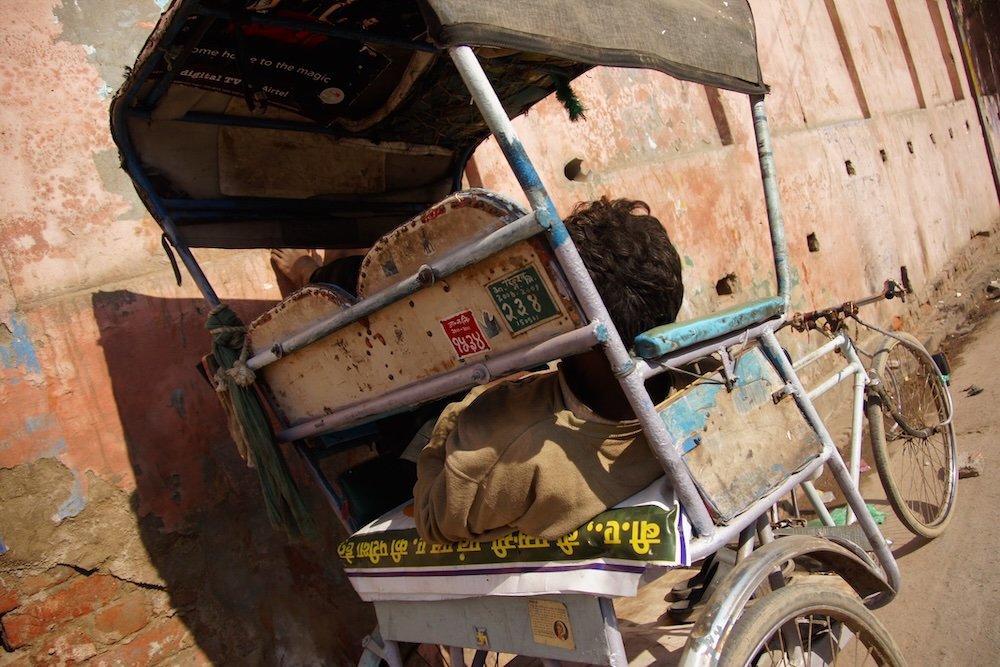
Agra Transportation Guide
Navigating Agra can be an adventure in itself, but with some planning, it’s quite manageable. Whether you’re looking to arrive from a distant city or just get around locally, this Agra travel guide section covers it all. Here are the primary transportation options and key tips to make your journey smoother.
Getting to Agra
- By Air: The nearest international airport is in Delhi (Indira Gandhi International Airport). From there, you can take a domestic flight to Agra’s Kheria Airport, though flights are limited.
- By Train: Agra is well-connected by major rail lines. Agra Cantt (AGC) is the main station, with trains from Delhi, Jaipur, Mumbai, Kolkata, and beyond. The Gatimaan Express and Shatabdi Express from Delhi are popular for their speed and comfort.
- By Road: Agra lies on the Yamuna Expressway connecting it to Delhi, making a road trip of around three hours possible. State and private buses also ply the route, including comfortable Volvo options.
Tip: Plan your arrival during daylight hours if possible, especially if it’s your first visit.
Local Transport Within Agra
- Auto-Rickshaws (Tuk-Tuks): These are the most common way to get around the city. Negotiate the fare beforehand or insist on a meter if one is available.
- Cycle-Rickshaws: Perfect for short distances in crowded markets like Kinari Bazaar. It’s slow but offers a more immersive experience.
- E-Rickshaws: Eco-friendly options becoming increasingly popular in tourist areas. They’re quieter and less polluting.
- Taxis and App-Based Cabs: Services like Uber and Ola are operational in Agra, but availability can vary. Traditional taxis are also an option, especially for day rentals.
Tip: Carry small change for rickshaw rides; it makes fare negotiation smoother.
Renting Vehicles
- Car Rentals with Driver: Many travelers opt for hiring a car with a driver for the day, especially if they plan to visit multiple sites or day-trip to places like Fatehpur Sikri.
- Self-Drive Cars or Scooters: Not as common in Agra as in some other Indian cities. Traffic can be chaotic, and parking near popular sites can be tricky.
- Bicycles: Some guesthouses and hostels offer bicycle rentals for exploring local streets. It’s a healthy and eco-friendly option if you’re comfortable navigating Indian traffic.
Tip: Check your insurance coverage if you plan on driving yourself. Indian roads can be challenging for newcomers.
Agra Sightseeing Buses
There are government-run tourist buses that follow a set route covering major attractions like the Taj Mahal, Agra Fort, and Fatehpur Sikri. They usually include a guide and a fixed timetable. This option is cost-effective but lacks flexibility. You’ll adhere to a group schedule, which can feel rushed at certain stops. Still, it’s a stress-free way to see multiple sites in one day.
- Tip: Arrive early to secure good seats.
- Bring snacks and water since stops might be limited.
- Check the official tourism website for updated schedules.
Traffic and Safety Tips
Agra’s roads can get crowded, especially near the Taj Mahal and Agra Fort. Peak traffic times are usually early morning and late afternoon. If you’re unfamiliar with local driving customs, it might be better to rely on taxis or rickshaws. Also, watch out for stray animals, particularly cows, wandering onto roads. Pedestrians often cross without warning, so stay alert if you’re driving or cycling.
- Tip: Honk sparingly but be aware that honking is common in India for signaling.
- Wear seat belts or helmets where applicable.
- Use Google Maps or local apps for navigation.
Railway Connections for Further Travel
If you plan to continue your journey beyond Agra, trains can be a comfortable option. Agra Cantt offers connections to popular destinations like Varanasi, Jaipur, and Delhi. Book your train tickets well in advance, especially during peak tourist seasons. Indian Railways also provides online booking through the IRCTC website. Keep your ID proof handy when traveling by train, as ticket checks are frequent.
- Tip: Opt for AC coaches for a more comfortable ride, especially in hot weather.
- Check train schedules and delays online or through apps like Where is My Train.
- Pack light snacks and a refillable water bottle for longer journeys.
Navigating Agra doesn’t have to be stressful. By picking the right mode of transportation—be it a quick tuk-tuk ride or a pre-arranged taxi—you’ll get to all the things to do comfortably. Plan ahead, stay flexible, and you’ll soon master the city’s rhythm.

Agra Travel Guide: Final Thoughts
Agra stands as a monument to history, architecture, and unparalleled craftsmanship. Yet, there’s more to it than the Taj Mahal—the city pulsates with vibrant markets, aromatic street food, and friendly locals eager to share their heritage. This Agra travel guide was designed to help you discover not just the iconic sites, but also the hidden corners that make every journey here memorable.
Embrace the Full Spectrum
Yes, the Taj Mahal is a must-see. It’s mesmerizing at sunrise when the marble glows softly, and equally enchanting under a full moon. But your adventure shouldn’t end there. Venture into the Agra Fort, stroll through bazaars like Kinari Bazaar, and savor local delicacies. Immersing yourself in these experiences lets you appreciate the city as a living tapestry of old and new.
Stay Curious
Don’t shy away from things to do that go beyond the usual tourist checklist. Agra’s local temples, rural walks, and heritage sites like Fatehpur Sikri unfold stories of empires, religions, and traditions. Spend some time exploring the Mughal Heritage Walk or trying street snacks in a tucked-away neighborhood. Each step reveals layers of culture often missed by rushed itineraries.
Mindful Travel
Always remember to be a respectful traveler. Dress modestly when visiting holy places, and seek permission before taking close-up photos of local residents. Your curiosity is welcomed, but politeness goes a long way. Bargaining in markets is common, yet maintain a friendly tone and a sense of humor. And if you see plastic waste, do your bit to keep this historic city clean.
Cherish the Moments
Whether you’re sipping chai on a rooftop cafe overlooking the Taj or exploring Mehtab Bagh at dusk, savor those moments. Travel isn’t just about ticking landmarks off a list. It’s about letting a place imprint on your memory, from the scent of fresh petha to the echoing calls of birds by the Yamuna River. Slow down whenever you can and let Agra’s enchantment sink in.
Final Tips
- Plan Accordingly: If you can, avoid weekends or national holidays for fewer crowds.
- Stay Hydrated: Carry water, especially in the warmer months.
- Trust Your Instincts: If a deal seems too good to be true, it probably is.
- Learn a Little Hindi: Even basic phrases like “Dhanyavaad” (thank you) or “Namaste” can break the ice.
- Spread the Word: If you enjoyed your trip, share your experiences and reviews to help other travelers.
In the end, Agra isn’t just a city with grand monuments. It’s a thriving testament to love, tradition, and resilience. Step into its world, and you’ll find a travel experience that resonates on more than one level. Safe travels and memorable adventures await in the City of the Taj.
